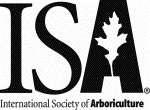
| Current Articles |
| Browse Archives |
| Search |
| Contact Us |
| AUF Home |
 |
Arboriculture & Urban Forestry Online
| Volume 33, Issue 2 —
March 2007
https://www.isa-arbor.com/Publications/Arboriculture-Urban-Forestry |
|
Fertilization of Red Maple ( Acer rubrum) and Littleleaf Linden ( Tilia cordata) Trees at Recommended Rates Does Not Aid Tree Establishment (View PDF) Susan D. Day and J. Roger Harris Abstract: Landscape trees typically grow slowly for several years after transplanting. We investigated whether fertilization could speed tree growth during this establishment period, which fertilization regimes were most effective, and whether fertilization interacted with irrigation. Fifty-four each of landscape-sized, balled-and-burlapped red maple (Acer rubrum) and littleleaf linden (Tilia cordata) were planted into a relatively infertile silt loam soil and were fertilized (1.5 kg N/100 m 2[3 lb N/1000 ft 2]) each spring (either including or not including at planting), each fall, or not fertilized. Each of these fertilizer regimes was either irrigated or not irrigated during 3 years. An additional treatment of an unirrigated, split (spring/fall) fertilizer application was included. There was no evidence that fertilization affected irrigated trees differently than unirrigated trees. Overall, fertilization did not speed establishment and did not affect trunk growth, shoot extension, or leaf nitrogen content. There was no evidence that fall fertilization might be more effective than spring fertilization. There was no indication that fertilized trees experienced increased drought stress. Nitrogen rates and factors affecting fertilizer uptake are discussed. Keywords: Fertilization; nitrogen; transplanting; tree establishment; urban forestry; urban soils. |
Current Articles
| Browse Archives | Search | AUF Home | ISA Home
| Get Acrobat